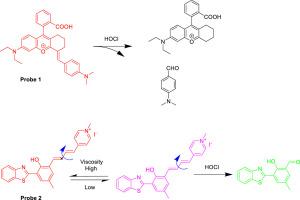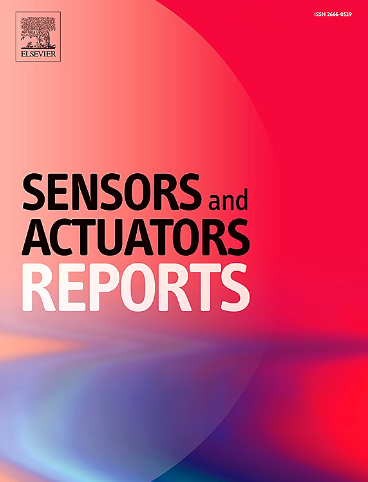有机近红外荧光探针检测次氯酸/次氯酸盐的最新进展
IF 7.6
Q1 BIOTECHNOLOGY & APPLIED MICROBIOLOGY
引用次数: 0
摘要
次氯酸(HClO)在生理和病理过程中起着至关重要的作用,失调的HClO产生与多种疾病状态有关。因此,体内HClO监测对于阐明疾病发病机制至关重要。在各种检测策略中,近红外(NIR)荧光探针为生物成像提供了无与伦比的优势。NIR-HClO荧光探针的设计越来越受到人们的关注。本文综述了用于选择性监测HClO的有机近红外荧光探针的设计和构建的最新进展(2021-2025)。我们系统地强调了基于碳-碳不饱和键、硫族化合物、含氮基团和苯酚类似物氧化的四种主要识别策略。此外,我们对该领域的总体挑战进行了全面的讨论,包括荧光团稳定性和识别片段反应性之间的微妙相互作用,多功能和治疗探针的趋势,以及在第二个近红外(NIR-II)窗口中对可激活探针的艰巨追求。最后,我们概述了未来的前景,旨在激发创新设计,克服当前的瓶颈,推动该领域走向临床翻译。我们相信,先进的近红外荧光探针的持续发展仍然是未来化学生物学和诊断研究的重要趋势。本文章由计算机程序翻译,如有差异,请以英文原文为准。

Recent process in organic near-infrared fluorescent probes for detecting hypochlorous acid/hypochlorite
Hypochlorous acid (HClO) plays an essential role in physiological and pathological processes, Dysregulated HClO production has been implicated in various disease states. Consequently, in vivo HClO monitoring is crucial for elucidating disease pathogenesis. Among various detection strategies, near-infrared (NIR) fluorescent probes offer unparalleled advantages for bio-imaging. The design of NIR-HClO fluorescent probes has garnered increasing research focus. This review provides a critical evaluation of the latest advances (2021–2025) in the design and construction of organic NIR fluorescent probes for selectively monitoring HClO. We systematically emphasize four major recognition strategies based on the oxidation of carbon-carbon unsaturated bonds, chalcogenides, nitrogen-containing groups, and phenol analogues. Furthermore, we offer a comprehensive discussion on the overarching challenges in the field, including the delicate interplay between fluorophore stability and recognition moiety reactivity, the trend towards multifunctional and theranostic probes, and the formidable quest for activatable probes in the second near-infrared (NIR-II) window. Finally, we outline future prospects, aiming to inspire innovative designs that will overcome current bottlenecks and propel the field towards clinical translation. We believe that the continued development of advanced NIR fluorescent probes remains a prominent and vital trend for future research in chemical biology and diagnostics.
求助全文
通过发布文献求助,成功后即可免费获取论文全文。
去求助
来源期刊

Sensors and Actuators Reports
Multiple-
CiteScore
9.60
自引率
0.00%
发文量
60
审稿时长
49 days
期刊介绍:
Sensors and Actuators Reports is a peer-reviewed open access journal launched out from the Sensors and Actuators journal family. Sensors and Actuators Reports is dedicated to publishing new and original works in the field of all type of sensors and actuators, including bio-, chemical-, physical-, and nano- sensors and actuators, which demonstrates significant progress beyond the current state of the art. The journal regularly publishes original research papers, reviews, and short communications.
For research papers and short communications, the journal aims to publish the new and original work supported by experimental results and as such purely theoretical works are not accepted.
 求助内容:
求助内容: 应助结果提醒方式:
应助结果提醒方式:


